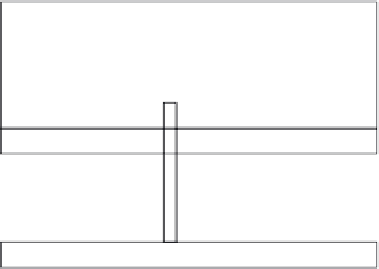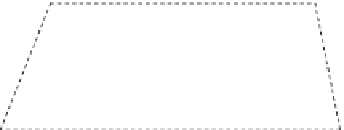Environmental Engineering Reference
In-Depth Information
Water from the aquifer converges on the well from all directions and the hydraulic gra-
dient gets steeper near the well. For these reasons, the three-dimensional shape of water
withdrawal from a well is termed a
cone of depression
. The cones of depression shown
in Figure 3.34 result from a pumping well withdrawing water from unconfined (a) and
confined aquifers (b).
Transmissivity (T) is a measure of the amount of water that can be transmitted horizon-
tally through a unit width by the full saturated thickness of the aquifer under a hydraulic
gradient of 1. Taking into account the definition of hydraulic conductivity, transmissivity
(T) is actually equal to the hydraulic conductivity (K) multiplied by the thickness of the
aquifer (b) (Equation 3.7).
Lateral radius
of influence
Lateral area
of influence
Unsaturated zone
Unconfined
sand and
gravel
aquifer
Water table
Saturated zone
Water surface
while pumping
Cone of depression
Pumping water level
Confining
layer
bedrock
(a)
Land surface
Pumping well
Lateral extent of cone
Potentiometric surface
Drawdown
Cone of depression
Unsaturated zone
Confining unit
Confined aquifer
Confining unit
(b)
FIGURE 3.34
(a) Cone of depression from a pumping well in an unconfined aquifer (IEPA 2010). (b) Cone of depression from
a pumping well in a confined aquifer. (Modified from Heath, R.C.,
Basic Ground-Water Hydrology
, United States
Geological Survey, Water Supply Paper 2220, United States Government Printing Office, Alexandria, VA, 1983.)


















Search WWH ::

Custom Search